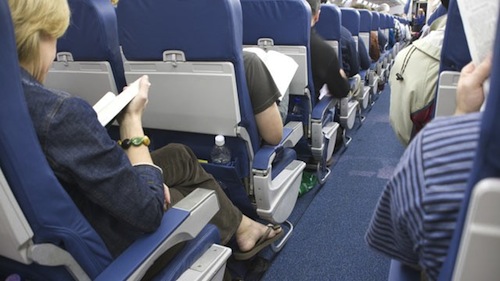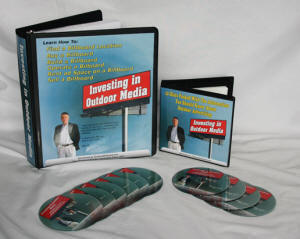Memo From Frank
I just got back from driving across the states of Indiana, Illinois, Iowa and Missouri. I saw a whole lot of outdoor on the trip, and the clear winners of the “best outdoor award” would be those old-fashioned tourist traps like Meramec Caverns. Maybe they’ve had nearly 100 years to hone their craft, but there’s nothing better than a simple billboard with bright colors, catchy graphic, big letters, and a clear “exit #__” at the bottom. It’s a shame that more graphic designers don’t have to apprentice at such establishments to see what it really takes to make a billboard effective. I was so curious about the Jesse James Museum billboards that I had to pull over and pay the admission. I think it must have been built in the 1950’s, but it was Americana at its finest. If it hadn’t been for the great outdoor campaign, I would never have even thought about taking the exit. Next time you’re out on a road trip, take note of the old wooden signs advertising such things as museums, caves, souvenir shops and such – they are the real pros when it comes to effective outdoor advertising.
Your Best Advertising Prospects May Be Staring You Right In The Face
I get asked frequently how I would approach getting into the billboard business today if I was starting all over again. There’s no question that the world has changed – and changes daily – and I see the opportunity in the industry differently today than I did 30 years ago. So here’s what I would focus on, as well as what I would not focus on:
Wooden units
I really like wooden units a lot – I always have. They are inexpensive to build and have great return on investment figures. They are easy to operate and manage. They are the workhorses of the industry, and have been around longer than any other type of outdoor. A particular business model I like with wooden signs is when you build a sign in a small town and charge $3,000 per year per face, paid in advance, and net about $5,000 per year, which pays for the sign in the first year. If you can build just 10 of these signs over a few years, you’ve got $50,000 per year in income, which is a phenomenal way to build wealth for your family or to supplement your retirement.
8-sheet units
These signs can be found in most urban markets – normally abandoned. You can also frequently find them in junk piles of structures in most major billboard companies. They are the least expensive monopole ever made, standing only about 12’ tall and with a roughly 5’ x 12’ face. However, you can vinyl wrap them and they can often be rented for $200+ per month per face, giving just about the same economics as the wooden signs cited above.
Wallscapes
These are some of the highest octane returns in outdoor. Essentially, mount the vinyl ad to the side of a building, and the building acts as the support structure – eliminating the cost of building a traditional sign. You can get a wallscape built for maybe $2,000, and it can generate around $500+ in monthly revenue.
Abandoned units
America is chock full of abandoned billboards – you can find them on just about every highway and surface street. There is a whole business model involved in bringing them back to life. The investment is very small, and the returns are in-line with the other options named above. I once brought an entire billboard company back to life in Los Angeles, and it is among the most lucrative ventures possible (I sold just two signs out of that package of 28 billboards, and paid the entire company off).
Be cautious on monopoles
When I started 30 years ago, monopoles were relatively cheap to build. You could build a 14’ x 48’ center-mount for around $25,000. Today, those prices have doubled and tripled, and the return on investment has shrunk to levels that are not very compelling. Whereas the old wisdom was to build monopoles at all times, I’m not sure that mantra is smart today. What’s the point of building a monopole and making 6% on your investment? Before you build any monopole – or any sign for that matter – run the numbers carefully and make sure that it can make at least a 20% annual return on investment. Less than that, and I’d walk away.
Be skeptical on LED
I think that LED is neat stuff, but I’m still not convinced that it’s a good time to get involved in it. The novelty is starting to wear off, and I’m not sure that renting the ad space at the prices I see out there is going to be possible going forward. In addition, the technology is rapidly changing, and you don’t want to get stuck with the old stuff. The prices are insanely high – try $250,000+ per face – and the returns are insanely low in most cases (despite what manufacturers and sales people will tell you). It’s one thing to run a budget showing 8 advertisers at $2,000 per 8 –second spot, and entirely different thing to actually get that sold.
Conclusion
There is great opportunity in outdoor advertising. However, my tastes have changed on where I’d start out, and what I’d focus on, compared to where I was 30 years ago. The basics remain unchanged, but you have to go where the money is, and the return on investment measure is king. No matter what niche you enter, make sure that you remain flexible to maximize your returns.
What Do An Airplane And A Billboard Have In Common?

The answer is a captive audience. That’s why in-flight magazines charge such a high advertising rate – what else are you going to look at for a couple of hours when you’re stuck in your chair? Billboards are identical – they reach a captive audience that can either look at the cars ahead of them, or turn their head slightly and see a myriad of billboard advertisements. The fact that billboards reach a captive audience of drivers and riders in automobiles is one of its greatest strengths. In an era in which the internet has destroyed radio, newspapers and television by offering greater choices at lower prices, only billboards have the monopoly that does not have to compete for your attention. While other media have to spend time and money coming up with content to get you to watch or listen, billboards don’t have to do one thing to get viewership. And as traffic counts climb – and commute times double – this captive audience keeps growing at no charge to the billboard companies.
Billboard Home Study Course
![]() How to Find a Billboard Location
How to Find a Billboard Location
![]() How to Buy a Billboard
How to Buy a Billboard
![]() How to Build a Billboard
How to Build a Billboard
![]() How to Operate a Billboard
How to Operate a Billboard
![]() How to Rent Ad Space on a Billboard
How to Rent Ad Space on a Billboard
![]() How to Sell a Billboard
How to Sell a Billboard
Get Your Copy Now!
The Market Report
Prices Are Delayed By At Least 15 Minutes
